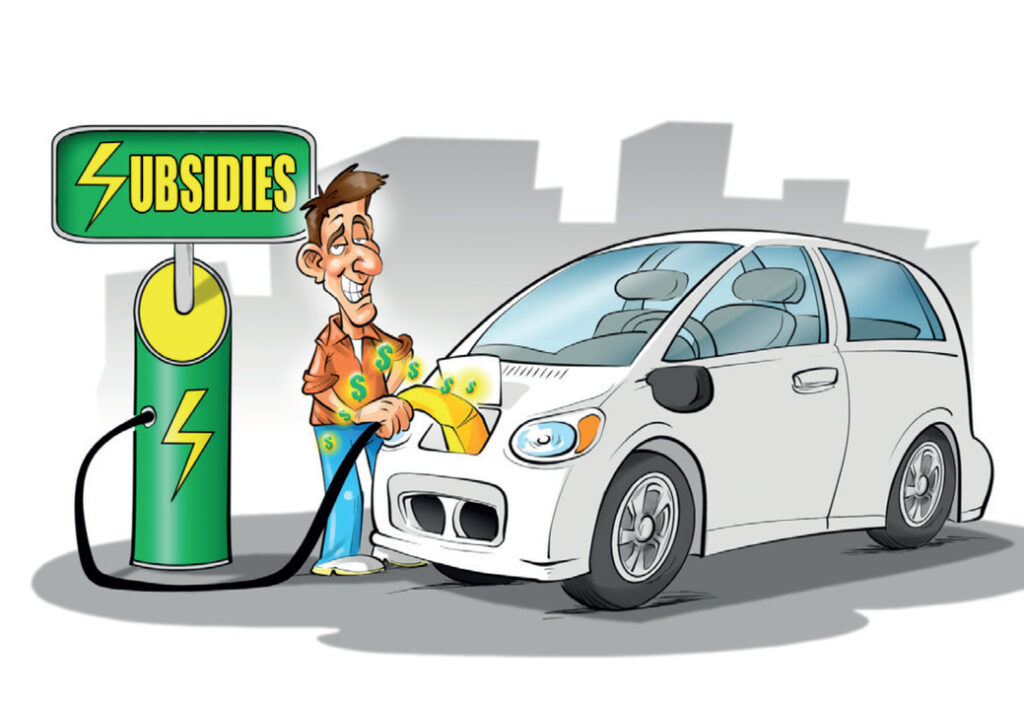Electric car subsidies are government incentives designed to promote the adoption of electric vehicles (EVs) by reducing their upfront costs for consumers. These subsidies typically come in the form of financial incentives, tax credits, grants, or rebates that aim to make electric cars more affordable and attractive compared to traditional gasoline vehicles. Governments around the world offer various types of subsidies to encourage consumers to switch to electric vehicles, thereby reducing greenhouse gas emissions and dependence on fossil fuels. These subsidies often target different aspects of EV ownership, such as purchase price, charging infrastructure development, and even home charging installations. By making electric cars more financially accessible, subsidies play a crucial role in accelerating the transition towards sustainable transportation solutions.

Electric car subsidies represent a pivotal component of government initiatives worldwide aimed at fostering the adoption of electric vehicles (EVs) as a sustainable alternative to traditional gasoline-powered cars. These subsidies, often comprising financial incentives, tax credits, grants, or rebates, play a significant role in reducing the initial cost barrier associated with purchasing an electric car. The fundamental goal is to make EVs more economically appealing and accessible to consumers, thereby accelerating the transition towards cleaner transportation options and mitigating environmental impacts.
Governments implement electric car subsidies to address several key objectives. Firstly, they aim to stimulate market demand for EVs by making them competitive in price with conventional vehicles. This approach is critical in overcoming consumer hesitancy regarding higher upfront costs typically associated with electric cars. Subsidies effectively narrow the price gap, making electric vehicles a viable choice for a broader segment of the population.
Secondly, electric car subsidies contribute to reducing greenhouse gas emissions and improving air quality. By incentivizing the adoption of EVs, governments seek to curb the environmental impact of transportation, which is a significant contributor to global carbon emissions. Electric vehicles produce zero tailpipe emissions, thereby helping to mitigate air pollution in urban areas and reducing overall reliance on fossil fuels.
The types and structures of electric car subsidies vary between countries and regions. In some jurisdictions, subsidies are provided as direct financial incentives at the point of purchase, effectively reducing the sticker price of electric vehicles. These subsidies can take the form of grants or rebates, where consumers receive a certain amount of money back after buying an eligible electric car.
Tax credits are another common form of electric car subsidy, offering consumers a reduction in their tax liability when they purchase an electric vehicle. These credits can offset a significant portion of the vehicle’s cost, making them an attractive option for consumers looking to lower their overall expenditure on a new car while supporting sustainable transportation choices.
Additionally, governments may incentivize electric vehicle adoption through policies that facilitate the development of charging infrastructure. Subsidies directed towards installing public charging stations or supporting home charging installations help alleviate concerns about the availability and accessibility of charging facilities, thereby enhancing the practicality and convenience of owning an electric car.
The effectiveness of electric car subsidies in achieving their intended goals hinges on several factors, including the size and duration of the subsidies, the transparency of eligibility criteria, and the alignment with broader environmental and energy policies. Governments must strike a balance between incentivizing consumer uptake of EVs and ensuring the sustainability of subsidy programs over the long term.
Moreover, the impact of electric car subsidies extends beyond individual consumers to encompass broader economic and societal benefits. Increased adoption of EVs can stimulate innovation and investment in clean technology sectors, driving job creation and economic growth associated with manufacturing, research, and development of electric vehicles and related infrastructure.
Critics of electric car subsidies often highlight concerns about their cost-effectiveness and potential for market distortion. They argue that subsidies could artificially inflate demand for electric vehicles, leading to supply chain constraints or inefficiencies in the market. Additionally, questions may arise regarding the equity and fairness of subsidizing electric vehicles, particularly if subsidies disproportionately benefit higher-income households.
Despite these considerations, the overarching rationale for electric car subsidies remains grounded in the imperative to address climate change, improve air quality, and reduce dependence on finite fossil fuel resources. As governments worldwide continue to refine and expand their approaches to supporting electric vehicle adoption, the role of subsidies is expected to evolve in tandem with advancements in technology, changes in consumer preferences, and shifts in global energy dynamics.
In conclusion, electric car subsidies represent a critical tool in governments’ strategies to promote sustainable transportation solutions. By making electric vehicles more affordable and attractive to consumers, subsidies play a vital role in accelerating the transition towards a cleaner, more efficient transportation system. As the global community strives to achieve ambitious climate and environmental targets, electric car subsidies will continue to play a pivotal role in shaping the future of mobility and fostering a more sustainable future for generations to come.


















Leave a Reply